Acute glaucoma causes. Acute Angle-Closure Glaucoma: Causes, Symptoms, and Treatment
What are the main causes of acute angle-closure glaucoma. How does acute angle-closure glaucoma present clinically. What are the risk factors for developing acute angle-closure glaucoma. How is acute angle-closure glaucoma diagnosed and treated. What complications can occur if acute angle-closure glaucoma is left untreated.
Understanding Acute Angle-Closure Glaucoma
Acute angle-closure glaucoma is a serious ocular emergency characterized by a rapid increase in intraocular pressure due to obstruction of aqueous humor outflow. This condition can lead to severe vision loss if not promptly diagnosed and treated. To fully grasp the complexities of this condition, it’s essential to explore its underlying mechanisms, presentation, and management strategies.
Pathophysiology of Acute Angle-Closure Glaucoma
The pathophysiology of acute angle-closure glaucoma is primarily rooted in the structural anatomy of the eye’s anterior chamber. The key factor predisposing individuals to this condition is a shallower angle between the iris and cornea. This anatomical configuration sets the stage for a cascade of events that can rapidly escalate to an acute glaucoma attack.

The Mechanism of Angle Closure
In acute angle-closure glaucoma, several factors contribute to the obstruction of aqueous humor outflow:
- Pupillary block: The iris and lens come into close contact, impeding the flow of aqueous humor from the posterior to the anterior chamber.
- Iris bowing: The pressure differential between chambers causes the iris to bow forward, further narrowing the angle.
- Angle obstruction: As the angle narrows, the trabecular meshwork becomes blocked, preventing proper drainage of aqueous humor.
Is pupillary dilation a trigger for acute angle-closure glaucoma? Indeed, pupillary dilation can precipitate an acute attack by increasing iris-lens contact and exacerbating pupillary block. This explains why attacks may occur in dimly lit environments or after the use of certain medications that cause pupil dilation.
Clinical Presentation and Symptoms
Recognizing the signs and symptoms of acute angle-closure glaucoma is crucial for timely intervention. The presentation is typically dramatic and unmistakable, often described as one of the most painful ocular conditions.

Key Symptoms
- Sudden onset of severe unilateral eye pain or headache
- Blurred or decreased vision
- Perception of rainbow-colored halos around bright lights
- Nausea and vomiting
- Eye redness
What physical exam findings are characteristic of acute angle-closure glaucoma? On examination, clinicians will typically observe:
- A fixed, mid-dilated pupil
- A hazy or cloudy cornea
- Marked conjunctival injection (redness)
- Significantly elevated intraocular pressure (often >50 mmHg)
Risk Factors and Epidemiology
Understanding the risk factors for acute angle-closure glaucoma can aid in identifying individuals at higher risk and potentially preventing attacks through prophylactic measures.
Demographic Factors
Several demographic characteristics are associated with an increased risk of acute angle-closure glaucoma:
- Age: The average age at presentation is 60 years, with increasing prevalence thereafter.
- Gender: Women are affected more frequently than men, with a 4:1 ratio.
- Race: Southeast Asians, Chinese, and Inuit populations have a higher incidence, while it is less common in black populations.
- Family history: Ocular anatomic features predisposing to angle closure are often inherited.
Why does age play a role in the development of acute angle-closure glaucoma? The increasing size of the lens with age contributes to a shallower anterior chamber, predisposing older individuals to angle closure.

Diagnostic Approach and Evaluation
Prompt and accurate diagnosis of acute angle-closure glaucoma is essential for preserving vision and preventing complications. The diagnostic process typically involves a combination of clinical examination and specialized tests.
Key Diagnostic Steps
- Patient history: Gathering information about the onset and nature of symptoms.
- Visual acuity assessment: To determine the extent of vision impairment.
- Slit-lamp examination: To evaluate the anterior chamber depth and angle.
- Tonometry: To measure intraocular pressure.
- Gonioscopy: To directly visualize the angle structures (if corneal clarity permits).
- Ophthalmoscopy: To assess the optic nerve for signs of damage.
How does gonioscopy aid in the diagnosis of acute angle-closure glaucoma? Gonioscopy allows direct visualization of the anterior chamber angle, confirming the presence of angle closure and helping to differentiate between acute and chronic forms of angle-closure glaucoma.
Management and Treatment Strategies
The management of acute angle-closure glaucoma is a medical emergency requiring immediate intervention to lower intraocular pressure and prevent permanent vision loss. Treatment typically involves a combination of medical and surgical approaches.
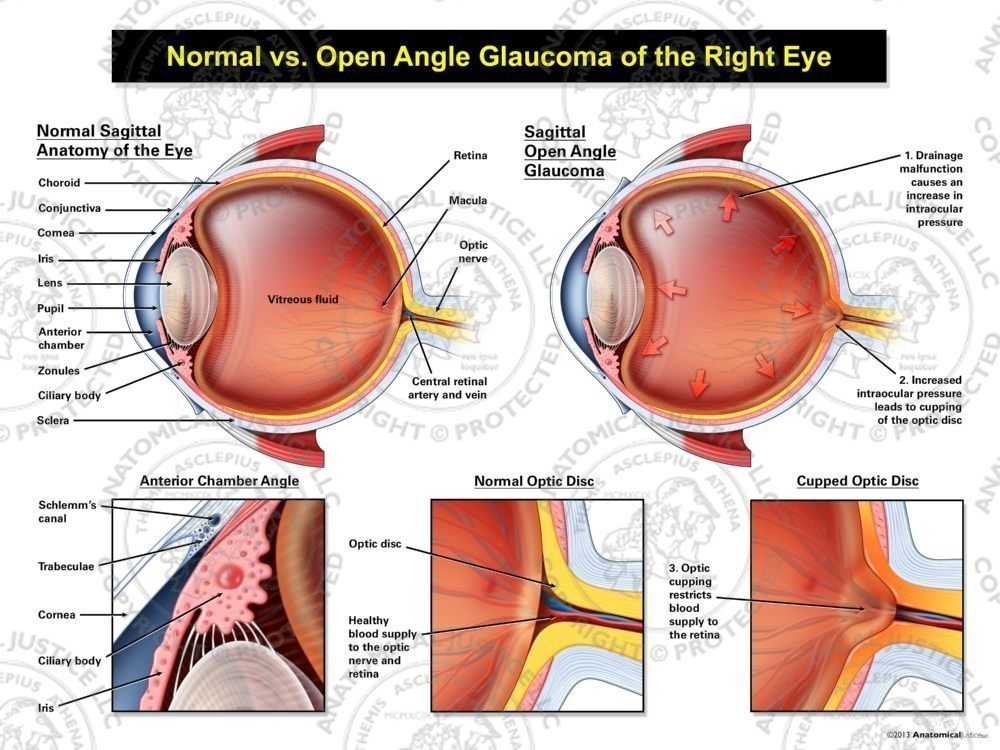
Initial Medical Management
The primary goal of initial treatment is to rapidly reduce intraocular pressure. This may include:
- Topical beta-blockers and alpha-2 agonists to decrease aqueous production
- Topical and oral carbonic anhydrase inhibitors
- Hyperosmotic agents like mannitol or glycerol to dehydrate the vitreous
- Analgesics for pain relief
- Antiemetics to control nausea and vomiting
What role do miotics play in the treatment of acute angle-closure glaucoma? Once the intraocular pressure begins to decrease, miotics like pilocarpine can be used to constrict the pupil and help pull the iris away from the angle, potentially breaking the attack.
Definitive Treatment
Once the acute attack is controlled, definitive treatment is necessary to prevent recurrence:
- Laser peripheral iridotomy: Creates a small hole in the iris to equalize pressure between the anterior and posterior chambers, eliminating pupillary block.
- Surgical iridectomy: A surgical alternative to laser treatment, creating a similar opening in the iris.
- Lens extraction: In some cases, removing the lens (cataract surgery) can help deepen the anterior chamber and resolve angle closure.
Complications and Prognosis
Acute angle-closure glaucoma can lead to severe complications if not promptly treated. Understanding these potential outcomes underscores the importance of rapid intervention.

Potential Complications
- Permanent vision loss due to optic nerve damage
- Chronic angle-closure glaucoma
- Peripheral anterior synechiae (adhesions between the iris and cornea)
- Cataract formation
- Corneal decompensation
Can acute angle-closure glaucoma cause irreversible vision loss? Yes, if left untreated, the sustained high intraocular pressure can cause irreversible damage to the optic nerve, leading to permanent vision loss. This emphasizes the critical nature of prompt diagnosis and treatment.
Prevention and Prophylaxis
While not all cases of acute angle-closure glaucoma can be prevented, certain measures can be taken to reduce the risk in susceptible individuals.
Preventive Strategies
- Regular eye examinations: Particularly important for individuals with risk factors.
- Prophylactic laser iridotomy: May be recommended for patients with very narrow angles.
- Awareness of triggers: Educating at-risk patients about situations that may precipitate an attack (e.g., dim lighting, certain medications).
- Genetic counseling: For families with a history of angle-closure glaucoma.
How effective is prophylactic laser iridotomy in preventing acute angle-closure glaucoma? Prophylactic laser iridotomy has been shown to be highly effective in preventing acute attacks in individuals with anatomically narrow angles, significantly reducing the risk of angle closure.

The Role of the Interprofessional Team
Managing acute angle-closure glaucoma requires a coordinated effort from various healthcare professionals. An interprofessional approach ensures comprehensive care and optimal outcomes for patients.
Key Team Members and Their Roles
- Ophthalmologists: Provide specialized diagnosis, treatment, and surgical interventions.
- Emergency physicians: Often the first point of contact, initiating early treatment and facilitating timely referral.
- Optometrists: Play a crucial role in early detection and referral of at-risk patients.
- Nurses: Assist in patient care, medication administration, and education.
- Pharmacists: Ensure appropriate medication selection and dosing, and educate patients on proper use of eye drops.
How does collaboration between emergency physicians and ophthalmologists improve outcomes in acute angle-closure glaucoma? Close collaboration ensures rapid initiation of treatment in the emergency department, followed by timely definitive management by an ophthalmologist, maximizing the chances of preserving vision and preventing complications.
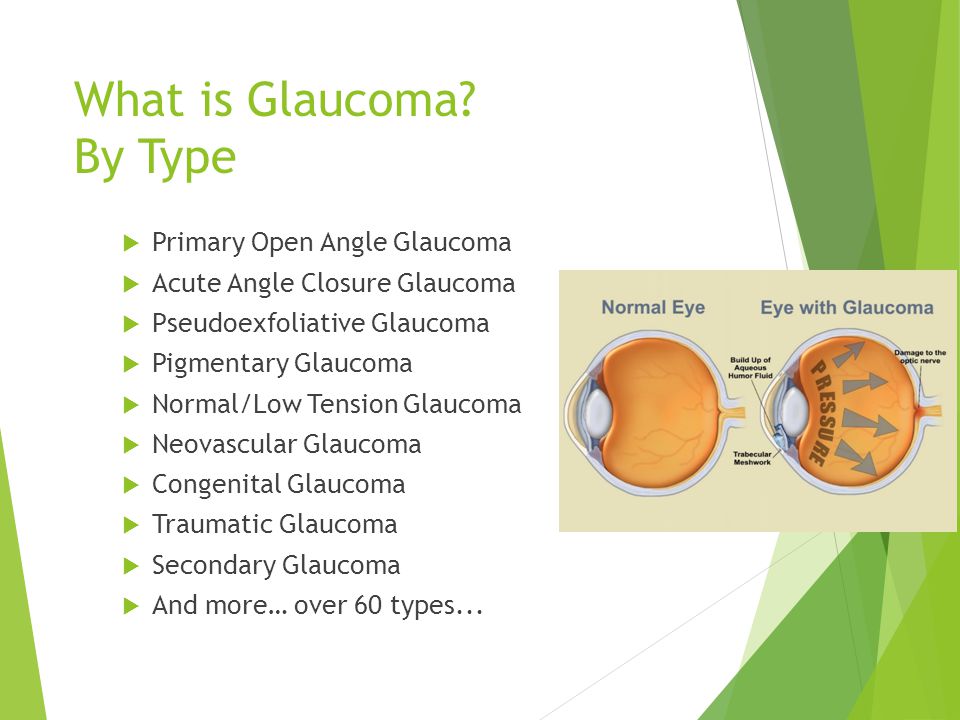
Future Directions and Research
As our understanding of acute angle-closure glaucoma evolves, ongoing research aims to improve prevention, diagnosis, and treatment strategies.
Emerging Areas of Research
- Advanced imaging techniques: Utilizing high-resolution OCT and AI-assisted analysis for earlier detection of at-risk eyes.
- Genetic studies: Identifying genetic markers associated with increased risk of angle closure.
- Novel therapeutic approaches: Developing medications that can rapidly and safely lower intraocular pressure during acute attacks.
- Minimally invasive surgical techniques: Exploring new procedures that can effectively prevent angle closure with reduced risk and faster recovery.
What potential does genetic research hold for the management of acute angle-closure glaucoma? Genetic studies may lead to the development of predictive tests, allowing for earlier identification of at-risk individuals and more targeted preventive strategies.
Acute angle-closure glaucoma remains a challenging and potentially devastating ocular emergency. However, with increased awareness, prompt recognition, and advances in treatment modalities, the prognosis for affected individuals continues to improve. The key to successful management lies in rapid intervention, coordinated care, and ongoing research to enhance our understanding and treatment of this complex condition.
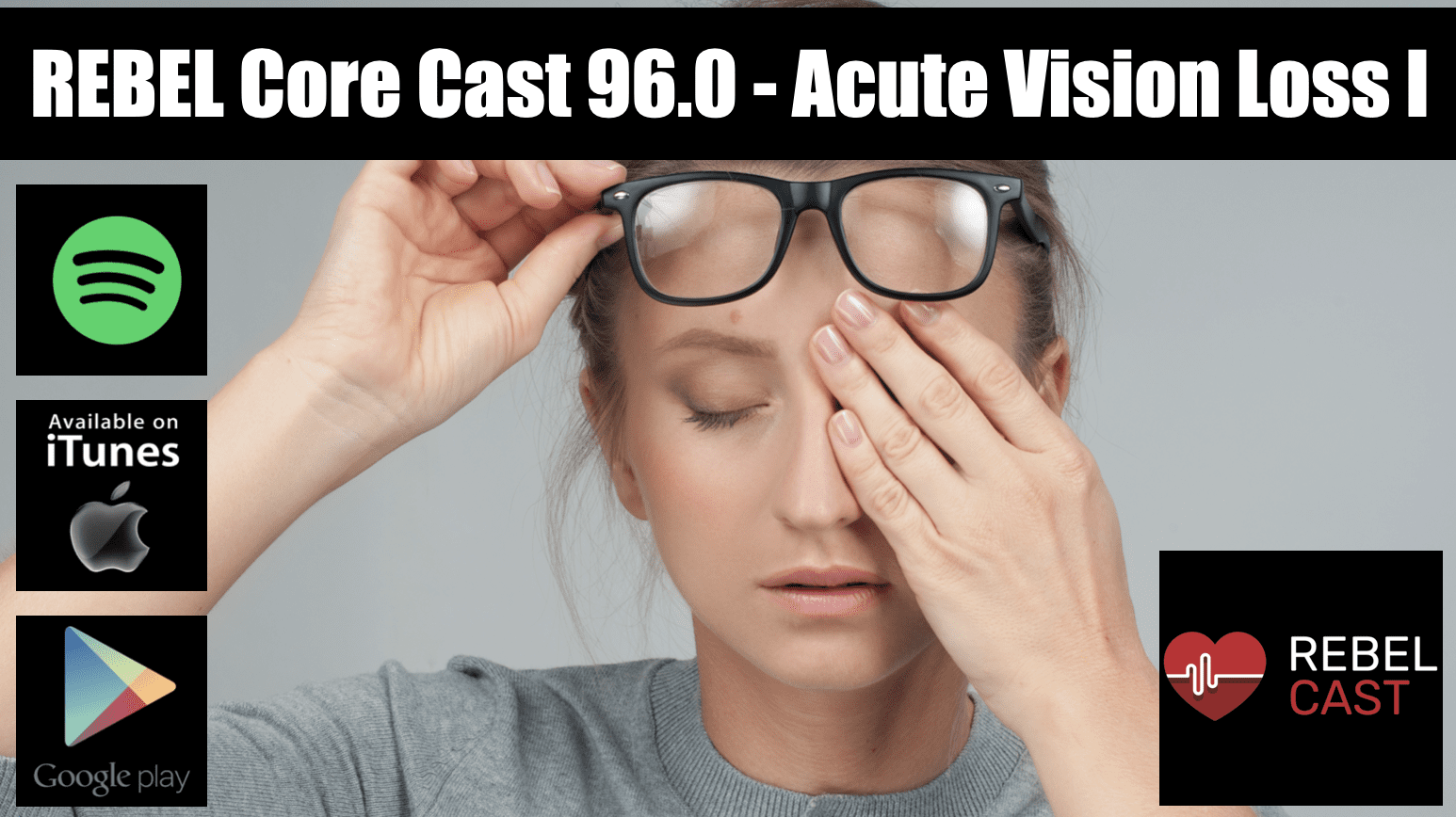
Acute Closed Angle Glaucoma – StatPearls
Babak Khazaeni; Leila Khazaeni.
Author Information and Affiliations
Last Update: January 2, 2023.
Continuing Education Activity
Acute angle-closure glaucoma is an ocular emergency that results from a rapid increase in intraocular pressure due to outflow obstruction of aqueous humor. Several factors lead to the obstruction in acute angle-closure glaucoma, but the major predisposing factor is the structural anatomy of the anterior chamber, leading to a shallower angle between the iris and the cornea. Acute angle-closure glaucoma presents as a sudden onset of severe unilateral eye pain or a headache associated with blurred vision, rainbow-colored halos around bright lights, nausea, and vomiting. The physical exam will reveal a fixed midpoint pupil and a hazy or cloudy cornea with marked conjunctival injection. This activity reviews the evaluation and management of patients with acute angle-closure glaucoma and highlights the role of the interprofessional team in managing patients with this condition.
Objectives:
Describe the pathophysiology of acute angle-closure glaucoma.
Summarize how a patient with acute angle-closure glaucoma is likely to present.
Identify the critical immediate steps to take when managing a patient with acute angle-closure glaucoma.
Outline the role of a collaborative interprofessional team in providing well-coordinated care to patients presenting with acute angle-closure glaucoma.
Access free multiple choice questions on this topic.
Introduction
Glaucoma is a set of ocular disorders often defined by increased intraocular pressures leading to optic neuropathy and vision loss if untreated.[1] Glaucoma has traditionally been classified as open-angle or closed-angle and as primary or secondary. The angle refers to the angle between the iris and the cornea in the anterior chamber, which can become structurally obstructed. By definition, primary glaucomas are not associated with known ocular or systemic disorders and usually affect both eyes. Secondary glaucomas are associated with ocular or systemic disorders and are often unilateral. Acute angle-closure glaucoma is a subset of primary angle-closure glaucoma.
Secondary glaucomas are associated with ocular or systemic disorders and are often unilateral. Acute angle-closure glaucoma is a subset of primary angle-closure glaucoma.
The commonly accepted range for intraocular pressure is 10 to 22 mmHg. Three factors that affect the intraocular pressure are the rate of production of aqueous humor by the ciliary body, the resistance to aqueous outflow through the trabecular meshwork and Schlemm’s canal, and the episcleral venous pressure. The normal flow of aqueous humor starts in the ciliary body, goes through the pupil, and out through the trabecular meshwork and Schlemm’s canal in the angle of the anterior chamber. In acute angle-closure glaucoma, intraocular pressure increases rapidly due to outflow obstruction of the aqueous humor. Several factors lead to the obstruction in acute angle-closure glaucoma, but the major predisposing factor is the structural anatomy of the anterior chamber leading to a shallower angle.[2][3]
Etiology
Blockage to the flow of aqueous humor occurs due to a number of predisposing anatomic variations. These variations include a shallower anterior chamber, lens size, anterior location of the iris-lens diaphragm, and a narrow entrance to the anterior chamber angle. The shallower anterior chamber angle leads to a large area of the iris and lens being in contact with each other, slowing the flow of aqueous humor from the posterior chamber to the anterior chamber. This, in turn, leads to a pressure difference between the chambers called a pupillary block.[4]
These variations include a shallower anterior chamber, lens size, anterior location of the iris-lens diaphragm, and a narrow entrance to the anterior chamber angle. The shallower anterior chamber angle leads to a large area of the iris and lens being in contact with each other, slowing the flow of aqueous humor from the posterior chamber to the anterior chamber. This, in turn, leads to a pressure difference between the chambers called a pupillary block.[4]
The pupillary block causes bowing of the iris, which narrows the angle of the anterior chamber further. This cycle will perpetuate increasing intraocular pressures leading to the clinical presentation of acute angle-closure glaucoma.
Epidemiology
There are several risk factors for acute angle-closure glaucoma, including age, gender, race, and family history.[5]
Age: The average age at presentation is 60, and prevalence increases thereafter. This is felt to be due to the increasing size of the lens with age.

Gender: There is a 4 to 1 ratio of the incidence of angle-closure glaucoma in women versus men.
Race: Angle-closure glaucoma is more common in Southeast Asians, Chinese, and Eskimos. It is uncommon in black populations. In whites, acute angle-closure glaucoma accounts for 6% of all glaucoma diagnoses.[6]
Family history: Ocular anatomic features are inherited.
Pathophysiology
An acute attack of angle-closure glaucoma is precipitated by pupillary dilatation, leading to increasing iris and lens contact increasing the pupillary block.[7] The increasing pupillary block leads to bulging of the iris, acutely closing the angle between the iris and cornea, thus obstructing the aqueous humor outflow tract. The intraocular pressure rises acutely, leading to symptomology.
History and Physical
Acute angle-closure glaucoma presents as a sudden onset of severe unilateral eye pain or a headache associated with blurred vision, rainbow-colored halos around bright lights, nausea, and vomiting. The physical exam will reveal a fixed midpoint pupil and a hazy or cloudy cornea with marked conjunctival injection (most prominent at the limbus). Intraocular pressure will be elevated and can be as high as 60 to 80 mm Hg in an acute attack. A mild amount of aqueous flare and cells may be seen. The optic nerve may also be swollen during an acute attack.[8][9]
The physical exam will reveal a fixed midpoint pupil and a hazy or cloudy cornea with marked conjunctival injection (most prominent at the limbus). Intraocular pressure will be elevated and can be as high as 60 to 80 mm Hg in an acute attack. A mild amount of aqueous flare and cells may be seen. The optic nerve may also be swollen during an acute attack.[8][9]
Evaluation
Measuring elevated intraocular pressure is diagnostic. There is no need for any imaging studies. A basic metabolic panel should be checked if osmotic agents are used in the treatment regime. A gonioscopic examination by an ophthalmologist to verify angle-closure makes the definitive diagnosis. Gonioscopy of the unaffected eye will reveal a narrow occludable angle given the anatomic predisposing factors to acute angle-closure glaucoma (See other issues for further discussion). Glaucomflecken (grey-white opacities on the anterior lens capsule) may be visible if previous attacks of angle-closure glaucoma have occurred. [10]
[10]
Treatment / Management
The medical treatment for acute angle-closure glaucoma aims to decrease the intraocular pressure by blocking the production of aqueous humor, increasing the outflow of aqueous humor, and reducing the volume of the aqueous humor.[11][12]
Initial medical therapy includes a combination of the following medications:
Intravenous acetazolamide 500 mg to block the production of aqueous humor.
Intravenous mannitol 1 to 2 grams/kg can be given (if there is no contraindication) to rapidly reduce the volume of aqueous humor.
Topical beta-blocker (timolol 0.5%) one drop to block the production of aqueous humor.
Topical alpha 2-agonist (apraclonidine 1%) one drop to block the production of aqueous humor.
Topical pilocarpine 1% to 2% one drop every 15 minutes for two doses once intraocular pressure is below 40 mm Hg to increase the outflow of aqueous humor. This is not effective at higher pressures due to pressure-induced ischemic paralysis of the iris.

Intraocular pressure needs to be checked every hour.
Definitive treatment is peripheral iridectomy after the acute episode subsides. Laser iridectomy is the treatment of choice. Surgical iridectomy is indicated when laser iridectomy can not be accomplished. Iridectomy relieves the pupillary block as the pressure between the posterior and anterior chamber approaches zero by allowing the flow of aqueous humor through a different route. Iridectomy should be as peripheral as possible and covered by the eyelid to avoid monocular diplopia through this second hole in the pupil.[13]
Differential Diagnosis
Allergic conjunctivitis
Bacterial conjunctivitis (pink eye)
Viral conjunctivitis
Drug-induced glaucoma
Malignant glaucoma
Neovascular glaucoma
Phacomorphic glaucoma
Senile cataract (age-related cataract)
Lens subluxation[14]
Migraine headache[15]
Cluster headache
Suprachoroidal hemorrhage
Prognosis
The prognosis depends on early detection and prompt treatment of acute closed-angle glaucoma. A study conducted on 116 cases of acute angle-closure glaucoma concluded that the delay in presentation and the time taken to end the acute episode was the most important factor in determining the final outcome of these patients. High intraocular pressure was less effective in determining the long-term prognosis of this condition.[16]
A study conducted on 116 cases of acute angle-closure glaucoma concluded that the delay in presentation and the time taken to end the acute episode was the most important factor in determining the final outcome of these patients. High intraocular pressure was less effective in determining the long-term prognosis of this condition.[16]
Complications
If acute closed-angle glaucoma is not detected and treated in its initial stages, it can lead to temporary loss of vision or blindness. There is a loss of peripheral vision, followed by a loss of central vision. There can be a significant increase in IOP in patients with peripheral patent iridotomy and a flat anterior chamber. This condition is called malignant glaucoma. This condition is difficult to treat and progressively leads to blindness.[17]
Deterrence and Patient Education
Patients with a history of acute angle-closure glaucoma should avoid dim light. Pupils dilate in response to dim light, further narrowing the iridocorneal angle. Patients with hypermetropia are at an increased risk of developing angle-closure glaucoma.
Patients with hypermetropia are at an increased risk of developing angle-closure glaucoma.
Pearls and Other Issues
An untreated opposite eye has a 40% to 80% chance of developing an acute attack of angle-closure glaucoma over 5 to 10 years as it shares the same anatomic predisposing factors as the first eye.[18] Hence peripheral iridectomy should be performed in the other eye as well as the affected eye.
The gender and ethnicity predisposing factors to acute angle-closure glaucoma hint at a genetic predisposition to the disease in certain populations. Recent large-scale studies have shown a clear association to several genes and genetic loci with primary open-angle glaucoma, but evidence for acute angle-closure glaucoma is sparse. So far, only one study has shown a genetic locus on Chromosome 11 that can cause acute angle-closure glaucoma. Studies have been conducted on possible therapeutic targets in patients with early-onset glaucoma based on molecular and cellular events caused by MYOC, OPTN, and TBK1 mutations.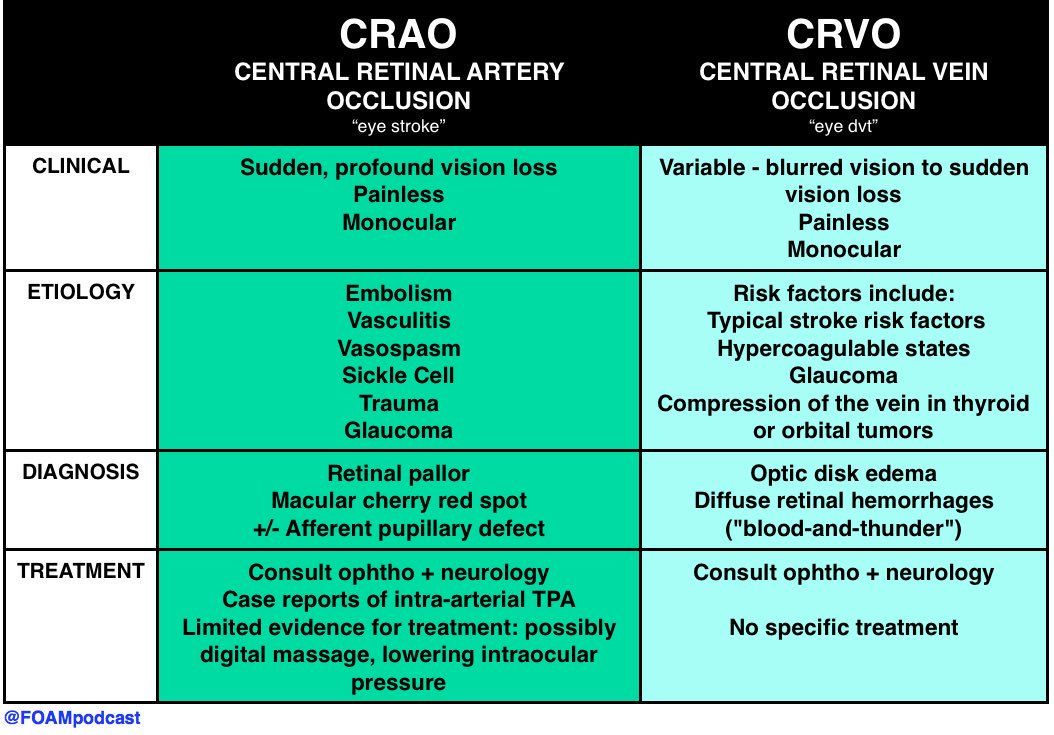 [19]
[19]
Enhancing Healthcare Team Outcomes
Acute angle-closure glaucoma is best managed by an interprofessional team, including an ophthalmologist, family clinician, an ophthalmology nurse, and the pharmacist. After managing the emergency with eye drops, the patient should be scheduled for an iridectomy. Clinicians need to be aware that the other eye is also at risk for acute angle-closure glaucoma, and prophylactic surgery is recommended.
The outcomes for patients with acute angle-closure glaucoma are good following treatment. However, delay in treatment can lead to damage to the optic nerve and vision loss.
Review Questions
Access free multiple choice questions on this topic.
Comment on this article.
References
- 1.
Prum BE, Herndon LW, Moroi SE, Mansberger SL, Stein JD, Lim MC, Rosenberg LF, Gedde SJ, Williams RD. Primary Angle Closure Preferred Practice Pattern(®) Guidelines. Ophthalmology. 2016 Jan;123(1):P1-P40.
 [PubMed: 26581557]
[PubMed: 26581557]- 2.
Pohl H, Tarnutzer AA. Acute Angle-Closure Glaucoma. N Engl J Med. 2018 Mar 08;378(10):e14. [PubMed: 29514027]
- 3.
Sun X, Dai Y, Chen Y, Yu DY, Cringle SJ, Chen J, Kong X, Wang X, Jiang C. Primary angle closure glaucoma: What we know and what we don’t know. Prog Retin Eye Res. 2017 Mar;57:26-45. [PubMed: 28039061]
- 4.
Weinreb RN, Aung T, Medeiros FA. The pathophysiology and treatment of glaucoma: a review. JAMA. 2014 May 14;311(18):1901-11. [PMC free article: PMC4523637] [PubMed: 24825645]
- 5.
Anderson DR, Jin JC, Wright MM. The physiologic characteristics of relative pupillary block. Am J Ophthalmol. 1991 Mar 15;111(3):344-50. [PubMed: 2000905]
- 6.
Ahram DF, Alward WL, Kuehn MH. The genetic mechanisms of primary angle closure glaucoma. Eye (Lond). 2015 Oct;29(10):1251-9. [PMC free article: PMC4815686] [PubMed: 26206529]
- 7.
Bourne RR, Taylor HR, Flaxman SR, Keeffe J, Leasher J, Naidoo K, Pesudovs K, White RA, Wong TY, Resnikoff S, Jonas JB.
 , Vision Loss Expert Group of the Global Burden of Disease Study. Number of People Blind or Visually Impaired by Glaucoma Worldwide and in World Regions 1990 – 2010: A Meta-Analysis. PLoS One. 2016;11(10):e0162229. [PMC free article: PMC5072735] [PubMed: 27764086]
, Vision Loss Expert Group of the Global Burden of Disease Study. Number of People Blind or Visually Impaired by Glaucoma Worldwide and in World Regions 1990 – 2010: A Meta-Analysis. PLoS One. 2016;11(10):e0162229. [PMC free article: PMC5072735] [PubMed: 27764086]- 8.
Collignon NJ. Emergencies in glaucoma: a review. Bull Soc Belge Ophtalmol. 2005;(296):71-81. [PubMed: 16050422]
- 9.
Watkinson S. Assessment and management of patients with acute red eye. Nurs Older People. 2013 Jun;25(5):27-34; quiz 35. [PubMed: 23914708]
- 10.
Garala P, Bansal A. Acute Secondary Optic Neuropathy as a Complication of a Single Episode of Acutely Raised Intraocular Pressure: A Case Series. J Glaucoma. 2019 Jan;28(1):e10-e13. [PubMed: 30234746]
- 11.
Shaw AD, Burnett CA, Eke T. A simple technique for indirect gonioscopy for patients who cannot be examined at the slit lamp. Br J Ophthalmol. 2006 Sep;90(9):1209. [PMC free article: PMC1857408] [PubMed: 16929072]
- 12.

Anwar F, Turalba A. An Overview of Treatment Methods for Primary Angle Closure. Semin Ophthalmol. 2017;32(1):82-85. [PubMed: 27686782]
- 13.
He M, Jiang Y, Huang S, Chang DS, Munoz B, Aung T, Foster PJ, Friedman DS. Laser peripheral iridotomy for the prevention of angle closure: a single-centre, randomised controlled trial. Lancet. 2019 Apr 20;393(10181):1609-1618. [PubMed: 30878226]
- 14.
Xing X, Huang L, Tian F, Zhang Y, Lv Y, Liu W, Liu A. Biometric indicators of eyes with occult lens subluxation inducing secondary acute angle closure. BMC Ophthalmol. 2020 Mar 05;20(1):87. [PMC free article: PMC7059282] [PubMed: 32138781]
- 15.
Renton BJ, Bastawrous A. Acute Angle Closure Glaucoma (AACG): an important differential diagnosis for acute severe headache. Acute Med. 2011;10(2):77-8. [PubMed: 22041605]
- 16.
David R, Tessler Z, Yassur Y. Long-term outcome of primary acute angle-closure glaucoma.
 Br J Ophthalmol. 1985 Apr;69(4):261-2. [PMC free article: PMC1040578] [PubMed: 3994941]
Br J Ophthalmol. 1985 Apr;69(4):261-2. [PMC free article: PMC1040578] [PubMed: 3994941]- 17.
Shahid H, Salmon JF. Malignant glaucoma: a review of the modern literature. J Ophthalmol. 2012;2012:852659. [PMC free article: PMC3321564] [PubMed: 22545204]
- 18.
Atalay E, Nongpiur ME, Baskaran M, Sharma S, Perera SA, Aung T. Biometric Factors Associated With Acute Primary Angle Closure: Comparison of the Affected and Fellow Eye. Invest Ophthalmol Vis Sci. 2016 Oct 01;57(13):5320-5325. [PubMed: 27727395]
- 19.
Wiggs JL, Pasquale LR. Genetics of glaucoma. Hum Mol Genet. 2017 Aug 01;26(R1):R21-R27. [PMC free article: PMC6074793] [PubMed: 28505344]
- 20.
Nuessle S, Luebke J, Boehringer D, Reinhard T, Anton A. [Acute angle closure : An ophthalmological emergency in the emergency room]. Med Klin Intensivmed Notfmed. 2022 Mar;117(2):137-143. [PMC free article: PMC8897352] [PubMed: 33580819]
Disclosure: Babak Khazaeni declares no relevant financial relationships with ineligible companies.

Disclosure: Leila Khazaeni declares no relevant financial relationships with ineligible companies.
Acute Closed Angle Glaucoma – StatPearls
Babak Khazaeni; Leila Khazaeni.
Author Information and Affiliations
Last Update: January 2, 2023.
Continuing Education Activity
Acute angle-closure glaucoma is an ocular emergency that results from a rapid increase in intraocular pressure due to outflow obstruction of aqueous humor. Several factors lead to the obstruction in acute angle-closure glaucoma, but the major predisposing factor is the structural anatomy of the anterior chamber, leading to a shallower angle between the iris and the cornea. Acute angle-closure glaucoma presents as a sudden onset of severe unilateral eye pain or a headache associated with blurred vision, rainbow-colored halos around bright lights, nausea, and vomiting. The physical exam will reveal a fixed midpoint pupil and a hazy or cloudy cornea with marked conjunctival injection. This activity reviews the evaluation and management of patients with acute angle-closure glaucoma and highlights the role of the interprofessional team in managing patients with this condition.
This activity reviews the evaluation and management of patients with acute angle-closure glaucoma and highlights the role of the interprofessional team in managing patients with this condition.
Objectives:
Describe the pathophysiology of acute angle-closure glaucoma.
Summarize how a patient with acute angle-closure glaucoma is likely to present.
Identify the critical immediate steps to take when managing a patient with acute angle-closure glaucoma.
Outline the role of a collaborative interprofessional team in providing well-coordinated care to patients presenting with acute angle-closure glaucoma.
Access free multiple choice questions on this topic.
Introduction
Glaucoma is a set of ocular disorders often defined by increased intraocular pressures leading to optic neuropathy and vision loss if untreated.[1] Glaucoma has traditionally been classified as open-angle or closed-angle and as primary or secondary.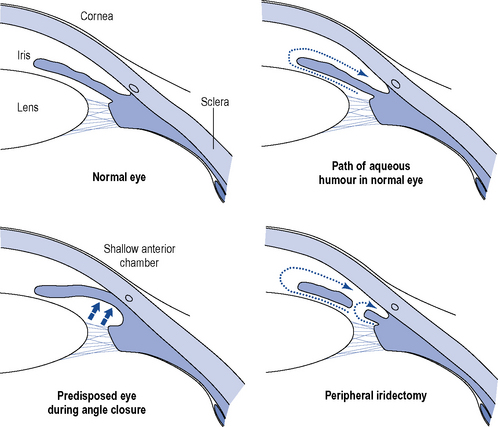 The angle refers to the angle between the iris and the cornea in the anterior chamber, which can become structurally obstructed. By definition, primary glaucomas are not associated with known ocular or systemic disorders and usually affect both eyes. Secondary glaucomas are associated with ocular or systemic disorders and are often unilateral. Acute angle-closure glaucoma is a subset of primary angle-closure glaucoma.
The angle refers to the angle between the iris and the cornea in the anterior chamber, which can become structurally obstructed. By definition, primary glaucomas are not associated with known ocular or systemic disorders and usually affect both eyes. Secondary glaucomas are associated with ocular or systemic disorders and are often unilateral. Acute angle-closure glaucoma is a subset of primary angle-closure glaucoma.
The commonly accepted range for intraocular pressure is 10 to 22 mmHg. Three factors that affect the intraocular pressure are the rate of production of aqueous humor by the ciliary body, the resistance to aqueous outflow through the trabecular meshwork and Schlemm’s canal, and the episcleral venous pressure. The normal flow of aqueous humor starts in the ciliary body, goes through the pupil, and out through the trabecular meshwork and Schlemm’s canal in the angle of the anterior chamber. In acute angle-closure glaucoma, intraocular pressure increases rapidly due to outflow obstruction of the aqueous humor. Several factors lead to the obstruction in acute angle-closure glaucoma, but the major predisposing factor is the structural anatomy of the anterior chamber leading to a shallower angle.[2][3]
Several factors lead to the obstruction in acute angle-closure glaucoma, but the major predisposing factor is the structural anatomy of the anterior chamber leading to a shallower angle.[2][3]
Etiology
Blockage to the flow of aqueous humor occurs due to a number of predisposing anatomic variations. These variations include a shallower anterior chamber, lens size, anterior location of the iris-lens diaphragm, and a narrow entrance to the anterior chamber angle. The shallower anterior chamber angle leads to a large area of the iris and lens being in contact with each other, slowing the flow of aqueous humor from the posterior chamber to the anterior chamber. This, in turn, leads to a pressure difference between the chambers called a pupillary block.[4]
The pupillary block causes bowing of the iris, which narrows the angle of the anterior chamber further. This cycle will perpetuate increasing intraocular pressures leading to the clinical presentation of acute angle-closure glaucoma.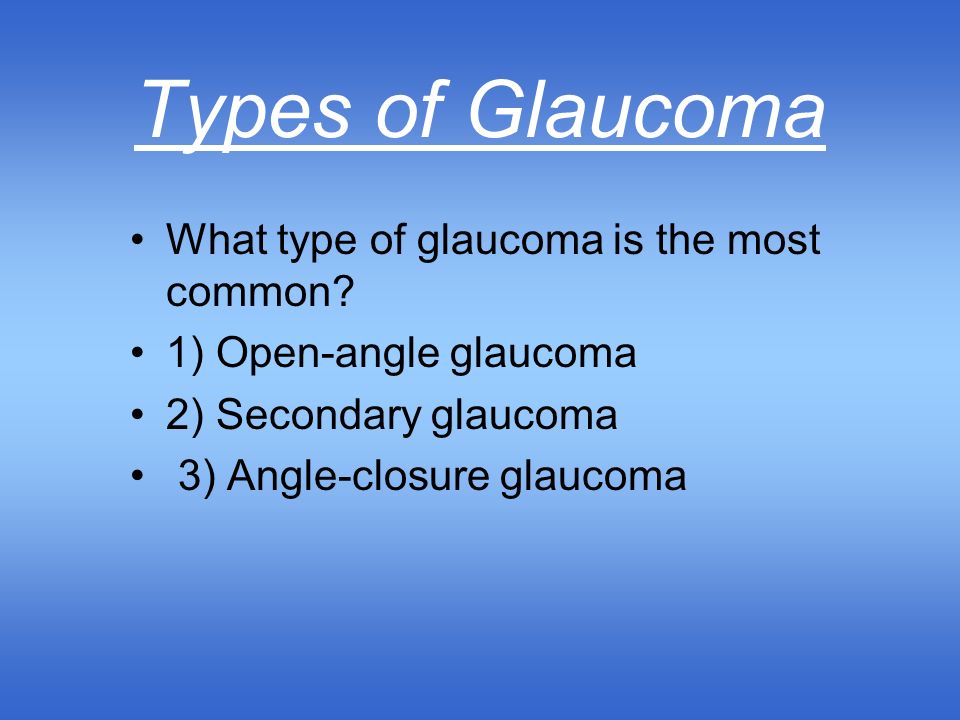
Epidemiology
There are several risk factors for acute angle-closure glaucoma, including age, gender, race, and family history.[5]
Age: The average age at presentation is 60, and prevalence increases thereafter. This is felt to be due to the increasing size of the lens with age.
Gender: There is a 4 to 1 ratio of the incidence of angle-closure glaucoma in women versus men.
Race: Angle-closure glaucoma is more common in Southeast Asians, Chinese, and Eskimos. It is uncommon in black populations. In whites, acute angle-closure glaucoma accounts for 6% of all glaucoma diagnoses.[6]
Family history: Ocular anatomic features are inherited.
Pathophysiology
An acute attack of angle-closure glaucoma is precipitated by pupillary dilatation, leading to increasing iris and lens contact increasing the pupillary block.[7] The increasing pupillary block leads to bulging of the iris, acutely closing the angle between the iris and cornea, thus obstructing the aqueous humor outflow tract. The intraocular pressure rises acutely, leading to symptomology.
The intraocular pressure rises acutely, leading to symptomology.
History and Physical
Acute angle-closure glaucoma presents as a sudden onset of severe unilateral eye pain or a headache associated with blurred vision, rainbow-colored halos around bright lights, nausea, and vomiting. The physical exam will reveal a fixed midpoint pupil and a hazy or cloudy cornea with marked conjunctival injection (most prominent at the limbus). Intraocular pressure will be elevated and can be as high as 60 to 80 mm Hg in an acute attack. A mild amount of aqueous flare and cells may be seen. The optic nerve may also be swollen during an acute attack.[8][9]
Evaluation
Measuring elevated intraocular pressure is diagnostic. There is no need for any imaging studies. A basic metabolic panel should be checked if osmotic agents are used in the treatment regime. A gonioscopic examination by an ophthalmologist to verify angle-closure makes the definitive diagnosis. Gonioscopy of the unaffected eye will reveal a narrow occludable angle given the anatomic predisposing factors to acute angle-closure glaucoma (See other issues for further discussion). Glaucomflecken (grey-white opacities on the anterior lens capsule) may be visible if previous attacks of angle-closure glaucoma have occurred.[10]
Glaucomflecken (grey-white opacities on the anterior lens capsule) may be visible if previous attacks of angle-closure glaucoma have occurred.[10]
Treatment / Management
The medical treatment for acute angle-closure glaucoma aims to decrease the intraocular pressure by blocking the production of aqueous humor, increasing the outflow of aqueous humor, and reducing the volume of the aqueous humor.[11][12]
Initial medical therapy includes a combination of the following medications:
Intravenous acetazolamide 500 mg to block the production of aqueous humor.
Intravenous mannitol 1 to 2 grams/kg can be given (if there is no contraindication) to rapidly reduce the volume of aqueous humor.
Topical beta-blocker (timolol 0.5%) one drop to block the production of aqueous humor.
Topical alpha 2-agonist (apraclonidine 1%) one drop to block the production of aqueous humor.
Topical pilocarpine 1% to 2% one drop every 15 minutes for two doses once intraocular pressure is below 40 mm Hg to increase the outflow of aqueous humor.
 This is not effective at higher pressures due to pressure-induced ischemic paralysis of the iris.
This is not effective at higher pressures due to pressure-induced ischemic paralysis of the iris.
Intraocular pressure needs to be checked every hour.
Definitive treatment is peripheral iridectomy after the acute episode subsides. Laser iridectomy is the treatment of choice. Surgical iridectomy is indicated when laser iridectomy can not be accomplished. Iridectomy relieves the pupillary block as the pressure between the posterior and anterior chamber approaches zero by allowing the flow of aqueous humor through a different route. Iridectomy should be as peripheral as possible and covered by the eyelid to avoid monocular diplopia through this second hole in the pupil.[13]
Differential Diagnosis
Allergic conjunctivitis
Bacterial conjunctivitis (pink eye)
Viral conjunctivitis
Drug-induced glaucoma
Malignant glaucoma
Neovascular glaucoma
Phacomorphic glaucoma
Senile cataract (age-related cataract)
Lens subluxation[14]
Migraine headache[15]
Cluster headache
Suprachoroidal hemorrhage
Prognosis
The prognosis depends on early detection and prompt treatment of acute closed-angle glaucoma. A study conducted on 116 cases of acute angle-closure glaucoma concluded that the delay in presentation and the time taken to end the acute episode was the most important factor in determining the final outcome of these patients. High intraocular pressure was less effective in determining the long-term prognosis of this condition.[16]
A study conducted on 116 cases of acute angle-closure glaucoma concluded that the delay in presentation and the time taken to end the acute episode was the most important factor in determining the final outcome of these patients. High intraocular pressure was less effective in determining the long-term prognosis of this condition.[16]
Complications
If acute closed-angle glaucoma is not detected and treated in its initial stages, it can lead to temporary loss of vision or blindness. There is a loss of peripheral vision, followed by a loss of central vision. There can be a significant increase in IOP in patients with peripheral patent iridotomy and a flat anterior chamber. This condition is called malignant glaucoma. This condition is difficult to treat and progressively leads to blindness.[17]
Deterrence and Patient Education
Patients with a history of acute angle-closure glaucoma should avoid dim light. Pupils dilate in response to dim light, further narrowing the iridocorneal angle. Patients with hypermetropia are at an increased risk of developing angle-closure glaucoma.
Patients with hypermetropia are at an increased risk of developing angle-closure glaucoma.
Pearls and Other Issues
An untreated opposite eye has a 40% to 80% chance of developing an acute attack of angle-closure glaucoma over 5 to 10 years as it shares the same anatomic predisposing factors as the first eye.[18] Hence peripheral iridectomy should be performed in the other eye as well as the affected eye.
The gender and ethnicity predisposing factors to acute angle-closure glaucoma hint at a genetic predisposition to the disease in certain populations. Recent large-scale studies have shown a clear association to several genes and genetic loci with primary open-angle glaucoma, but evidence for acute angle-closure glaucoma is sparse. So far, only one study has shown a genetic locus on Chromosome 11 that can cause acute angle-closure glaucoma. Studies have been conducted on possible therapeutic targets in patients with early-onset glaucoma based on molecular and cellular events caused by MYOC, OPTN, and TBK1 mutations. [19]
[19]
Enhancing Healthcare Team Outcomes
Acute angle-closure glaucoma is best managed by an interprofessional team, including an ophthalmologist, family clinician, an ophthalmology nurse, and the pharmacist. After managing the emergency with eye drops, the patient should be scheduled for an iridectomy. Clinicians need to be aware that the other eye is also at risk for acute angle-closure glaucoma, and prophylactic surgery is recommended.
The outcomes for patients with acute angle-closure glaucoma are good following treatment. However, delay in treatment can lead to damage to the optic nerve and vision loss.
Review Questions
Access free multiple choice questions on this topic.
Comment on this article.
References
- 1.
Prum BE, Herndon LW, Moroi SE, Mansberger SL, Stein JD, Lim MC, Rosenberg LF, Gedde SJ, Williams RD. Primary Angle Closure Preferred Practice Pattern(®) Guidelines. Ophthalmology. 2016 Jan;123(1):P1-P40.
 [PubMed: 26581557]
[PubMed: 26581557]- 2.
Pohl H, Tarnutzer AA. Acute Angle-Closure Glaucoma. N Engl J Med. 2018 Mar 08;378(10):e14. [PubMed: 29514027]
- 3.
Sun X, Dai Y, Chen Y, Yu DY, Cringle SJ, Chen J, Kong X, Wang X, Jiang C. Primary angle closure glaucoma: What we know and what we don’t know. Prog Retin Eye Res. 2017 Mar;57:26-45. [PubMed: 28039061]
- 4.
Weinreb RN, Aung T, Medeiros FA. The pathophysiology and treatment of glaucoma: a review. JAMA. 2014 May 14;311(18):1901-11. [PMC free article: PMC4523637] [PubMed: 24825645]
- 5.
Anderson DR, Jin JC, Wright MM. The physiologic characteristics of relative pupillary block. Am J Ophthalmol. 1991 Mar 15;111(3):344-50. [PubMed: 2000905]
- 6.
Ahram DF, Alward WL, Kuehn MH. The genetic mechanisms of primary angle closure glaucoma. Eye (Lond). 2015 Oct;29(10):1251-9. [PMC free article: PMC4815686] [PubMed: 26206529]
- 7.
Bourne RR, Taylor HR, Flaxman SR, Keeffe J, Leasher J, Naidoo K, Pesudovs K, White RA, Wong TY, Resnikoff S, Jonas JB.
 , Vision Loss Expert Group of the Global Burden of Disease Study. Number of People Blind or Visually Impaired by Glaucoma Worldwide and in World Regions 1990 – 2010: A Meta-Analysis. PLoS One. 2016;11(10):e0162229. [PMC free article: PMC5072735] [PubMed: 27764086]
, Vision Loss Expert Group of the Global Burden of Disease Study. Number of People Blind or Visually Impaired by Glaucoma Worldwide and in World Regions 1990 – 2010: A Meta-Analysis. PLoS One. 2016;11(10):e0162229. [PMC free article: PMC5072735] [PubMed: 27764086]- 8.
Collignon NJ. Emergencies in glaucoma: a review. Bull Soc Belge Ophtalmol. 2005;(296):71-81. [PubMed: 16050422]
- 9.
Watkinson S. Assessment and management of patients with acute red eye. Nurs Older People. 2013 Jun;25(5):27-34; quiz 35. [PubMed: 23914708]
- 10.
Garala P, Bansal A. Acute Secondary Optic Neuropathy as a Complication of a Single Episode of Acutely Raised Intraocular Pressure: A Case Series. J Glaucoma. 2019 Jan;28(1):e10-e13. [PubMed: 30234746]
- 11.
Shaw AD, Burnett CA, Eke T. A simple technique for indirect gonioscopy for patients who cannot be examined at the slit lamp. Br J Ophthalmol. 2006 Sep;90(9):1209. [PMC free article: PMC1857408] [PubMed: 16929072]
- 12.

Anwar F, Turalba A. An Overview of Treatment Methods for Primary Angle Closure. Semin Ophthalmol. 2017;32(1):82-85. [PubMed: 27686782]
- 13.
He M, Jiang Y, Huang S, Chang DS, Munoz B, Aung T, Foster PJ, Friedman DS. Laser peripheral iridotomy for the prevention of angle closure: a single-centre, randomised controlled trial. Lancet. 2019 Apr 20;393(10181):1609-1618. [PubMed: 30878226]
- 14.
Xing X, Huang L, Tian F, Zhang Y, Lv Y, Liu W, Liu A. Biometric indicators of eyes with occult lens subluxation inducing secondary acute angle closure. BMC Ophthalmol. 2020 Mar 05;20(1):87. [PMC free article: PMC7059282] [PubMed: 32138781]
- 15.
Renton BJ, Bastawrous A. Acute Angle Closure Glaucoma (AACG): an important differential diagnosis for acute severe headache. Acute Med. 2011;10(2):77-8. [PubMed: 22041605]
- 16.
David R, Tessler Z, Yassur Y. Long-term outcome of primary acute angle-closure glaucoma.
 Br J Ophthalmol. 1985 Apr;69(4):261-2. [PMC free article: PMC1040578] [PubMed: 3994941]
Br J Ophthalmol. 1985 Apr;69(4):261-2. [PMC free article: PMC1040578] [PubMed: 3994941]- 17.
Shahid H, Salmon JF. Malignant glaucoma: a review of the modern literature. J Ophthalmol. 2012;2012:852659. [PMC free article: PMC3321564] [PubMed: 22545204]
- 18.
Atalay E, Nongpiur ME, Baskaran M, Sharma S, Perera SA, Aung T. Biometric Factors Associated With Acute Primary Angle Closure: Comparison of the Affected and Fellow Eye. Invest Ophthalmol Vis Sci. 2016 Oct 01;57(13):5320-5325. [PubMed: 27727395]
- 19.
Wiggs JL, Pasquale LR. Genetics of glaucoma. Hum Mol Genet. 2017 Aug 01;26(R1):R21-R27. [PMC free article: PMC6074793] [PubMed: 28505344]
- 20.
Nuessle S, Luebke J, Boehringer D, Reinhard T, Anton A. [Acute angle closure : An ophthalmological emergency in the emergency room]. Med Klin Intensivmed Notfmed. 2022 Mar;117(2):137-143. [PMC free article: PMC8897352] [PubMed: 33580819]
Disclosure: Babak Khazaeni declares no relevant financial relationships with ineligible companies.

Disclosure: Leila Khazaeni declares no relevant financial relationships with ineligible companies.
Acute attack of glaucoma, symptoms and treatment
The diagnosis of glaucoma forces patients to make certain changes in their usual lifestyle. This is the observance of the diet, and a healthy lifestyle, and the absence of heavy physical exertion with long slopes. But the key factor is still the normalization and regular monitoring of eye pressure. After all, its sharp jump – the so-called “acute attack of glaucoma” can lead to sudden and irreversible blindness.
Acute glaucoma complaints
Acute glaucoma is a dangerous condition characterized by an unforeseen, uncontrolled rise in pressure within the eye. The upper indicator of the norm is considered to be 22 mm Hg; in case of an acute attack, ophthalmologists note numbers from 50 to 100 mm Hg.
Among the causes of a sharp jump in pressure in the eye are:0014
Patients who have had an acute attack of glaucoma often note a feeling of rapid loss of vision, a foggy veil, observed the appearance of multi-colored circles around the bulbs before it starts.
But there are also symptoms that more accurately indicate an acute attack of glaucoma:
- a feeling of soreness in and around the eye (severe pain captures half of the head, cheekbones, temples or even the jaw)
- blurred vision, blurred feeling.
Among non-specific signs, experts distinguish nausea and vomiting that accompany severe headache. Also, a person can feel arrhythmia, heaviness in the chest, chills, increased t˚, general weakness.
Treatment of an acute attack of glaucoma
Many non-specific symptoms in a glaucoma attack, when every minute counts, greatly complicate a quick diagnosis. Only an experienced specialist after an eye examination can establish the presence of an acute condition.
According to the ophthalmologists of our center, even with a superficial examination, the doctor will detect:
- redness of the eye
- change in pupil color (becomes lighter, green or gray tint is possible)
- unnatural shape pupil
- dilated pupil
- lack of pupillary response to light
- increased tone of the eyeball, soreness
With a diagnosis of “acute attack of glaucoma”, treatment consists in normalizing intraocular pressure and blood circulation. The primary task of an ophthalmologist is to restore the blood supply to the retina and optic nerve.
The primary task of an ophthalmologist is to restore the blood supply to the retina and optic nerve.
As a rule, our doctors use medication to relieve an acute condition. In more rare cases, patients are shown surgical intervention if drug therapy after a while does not give a positive result.
Important!
At the slightest suspicion of an acute attack of glaucoma, the patient should immediately be taken to a specialized eye clinic, such as our center for eye microsurgery.
Acute attack of angle-closure glaucoma
An acute attack of glaucoma is more often caused by its angle-closure form. A sharp jump in pressure is more likely a variant of primary angle-closure glaucoma or its exacerbation. “The disease may be accompanied by acute and subacute attacks or become chronic. Therefore, anyone diagnosed with angle-closure glaucoma should allow for the possibility of a sharp attack and carry first aid drugs with them. The ophthalmologists of our center will help you choose them at a free consultation! Sign up! , – focuses on the head of the eye microsurgery center, ophthalmologist of the highest category Natalia Unguryan.
possible causes and risk factors
Most often, acute attacks are observed in angle-closure glaucoma. The “trigger” is a change in the position of the lens relative to the iris. Due to a violation of the outflow, fluid accumulates in the eye chamber, leading to a sharp increase in intraocular pressure by 2, and sometimes 3 times: from 20 to 60 mm Hg. Art. Such a drop is accompanied by pronounced symptoms: dull pressing pain in the affected eye, dizziness, a sharp decrease in vision, a change in the field of view. Even if such phenomena pass quickly, an appointment with an ophthalmologist is mandatory to prevent the development of complications.
Forewarned is forearmed
Acute attacks of glaucoma most often occur in the evening or at night, when in the dark or when the light turns on unexpectedly. Predisposing factors are congenital anomalies in the structure of the eye (thickened lens and thinned cornea, disproportionately small eyeball, small depth of the anterior chamber). The treatment regimen for glaucoma for each patient is selected individually.
The treatment regimen for glaucoma for each patient is selected individually.
Factors that may trigger the development of an attack
It is not possible to predict in advance, and therefore prevent an attack of acute glaucoma. The exact causes of exacerbation are not known – the following factors that provoke an exacerbation are only probabilistic.
- stressful situation and nervous tension. Tragic news, difficult showdowns, troubles at work – all this has a negative impact on the state of the central nervous system, and the result can be a sharp jump in pressure in one or both eyes.
- non-physiological head position. A strong forward bend (which is especially typical for elderly patients or during prolonged static work) disrupts blood circulation in the cervical spine and in the brain, which can lead to pinching of the optic nerve.
- injuries. A burn or mechanical damage thins the cornea, which in turn leads to an imbalance in the inflow and outflow of fluid.

Beware of drugs!
Taking certain medications: for example, atropine, which is often used to diagnose vision, increases eye pressure, which leads to pupil dilation and forward displacement of the iris. Fluid builds up in the eyeball, causing it to stop much harder. For prevention, it is necessary to constantly take anticholinergics (a prescription drug prescribed by your doctor). Antidepressants, hormonal contraceptives, steroids and anticoagulants can have a negative effect on glaucoma.
Physical factors
Approximately one third of attacks of exacerbation of glaucoma occur when the light is turned on unexpectedly in the dark or when the intensity of the light flux changes abruptly. Potentially dangerous factors are overheating (in the sun or in the bath), drinking large amounts of fluid (more than three liters per day), hard physical work or strength training (especially weight lifting). The most unfavorable option is the total effect of several factors – as a rule, in this case, glaucoma attacks are much more severe.



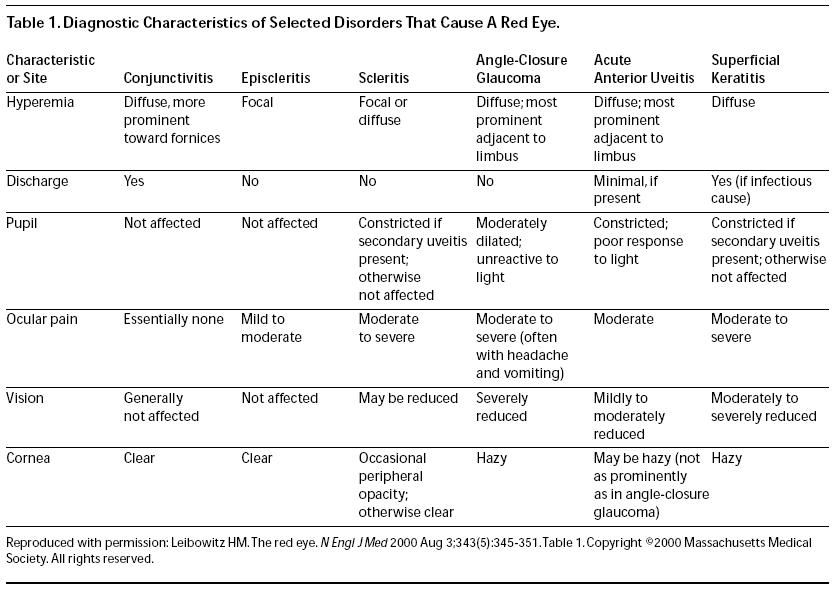 [PubMed: 26581557]
[PubMed: 26581557] , Vision Loss Expert Group of the Global Burden of Disease Study. Number of People Blind or Visually Impaired by Glaucoma Worldwide and in World Regions 1990 – 2010: A Meta-Analysis. PLoS One. 2016;11(10):e0162229. [PMC free article: PMC5072735] [PubMed: 27764086]
, Vision Loss Expert Group of the Global Burden of Disease Study. Number of People Blind or Visually Impaired by Glaucoma Worldwide and in World Regions 1990 – 2010: A Meta-Analysis. PLoS One. 2016;11(10):e0162229. [PMC free article: PMC5072735] [PubMed: 27764086]
 Br J Ophthalmol. 1985 Apr;69(4):261-2. [PMC free article: PMC1040578] [PubMed: 3994941]
Br J Ophthalmol. 1985 Apr;69(4):261-2. [PMC free article: PMC1040578] [PubMed: 3994941]
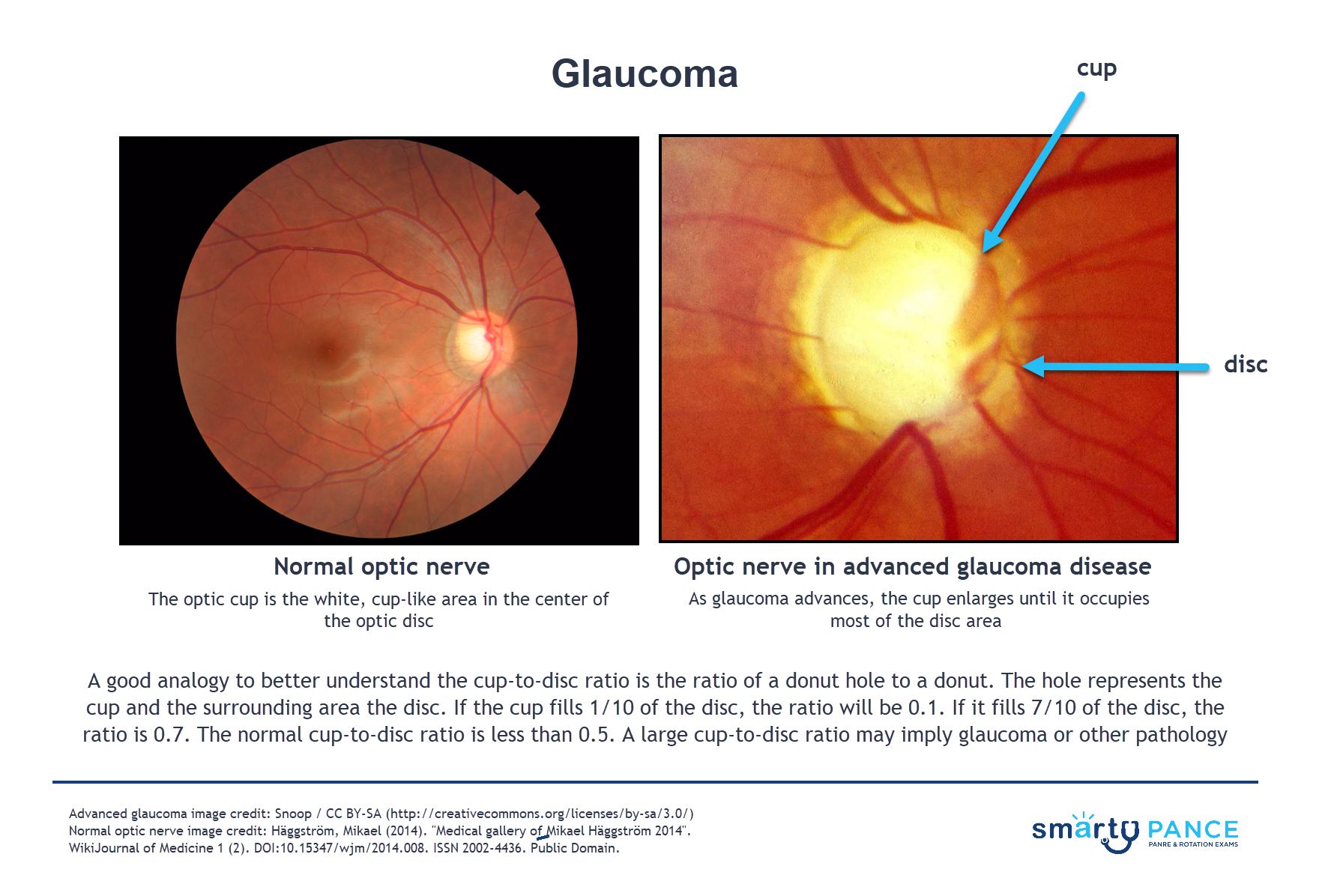 This is not effective at higher pressures due to pressure-induced ischemic paralysis of the iris.
This is not effective at higher pressures due to pressure-induced ischemic paralysis of the iris. [PubMed: 26581557]
[PubMed: 26581557]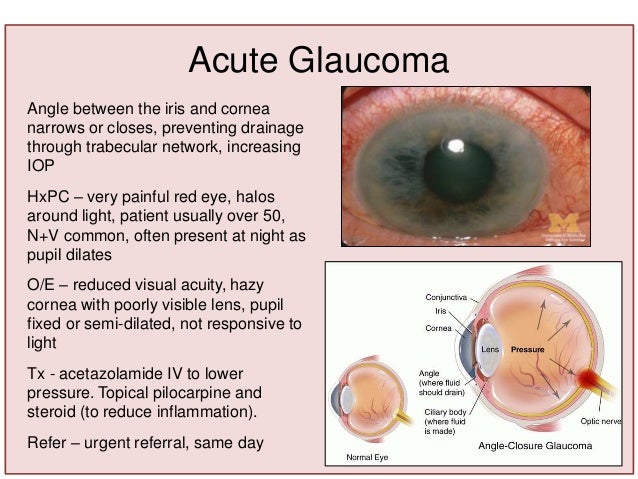 , Vision Loss Expert Group of the Global Burden of Disease Study. Number of People Blind or Visually Impaired by Glaucoma Worldwide and in World Regions 1990 – 2010: A Meta-Analysis. PLoS One. 2016;11(10):e0162229. [PMC free article: PMC5072735] [PubMed: 27764086]
, Vision Loss Expert Group of the Global Burden of Disease Study. Number of People Blind or Visually Impaired by Glaucoma Worldwide and in World Regions 1990 – 2010: A Meta-Analysis. PLoS One. 2016;11(10):e0162229. [PMC free article: PMC5072735] [PubMed: 27764086]
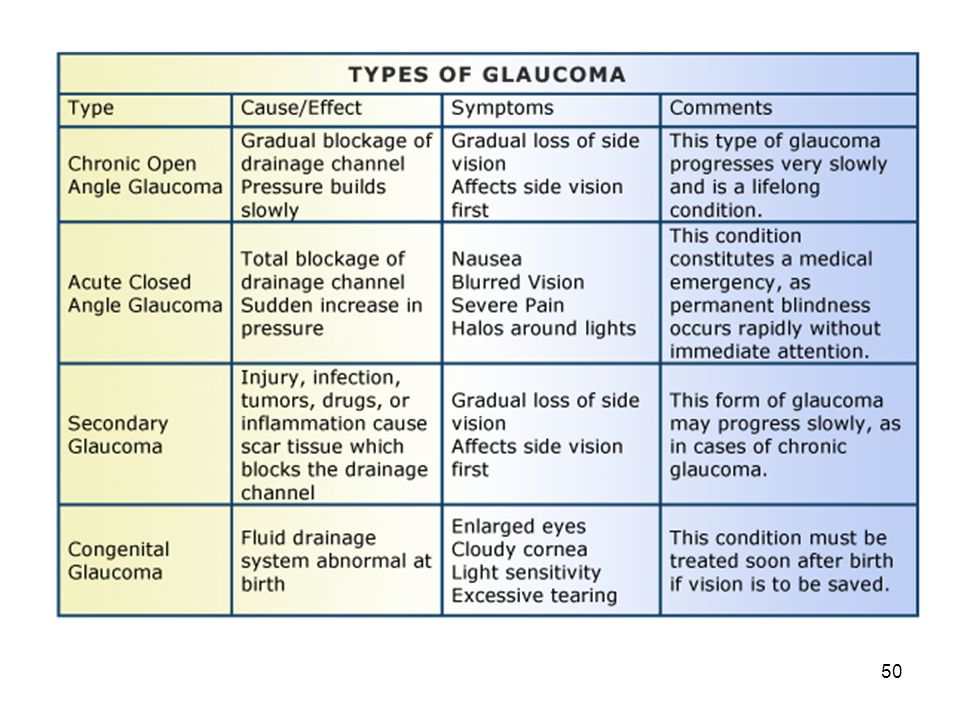 Br J Ophthalmol. 1985 Apr;69(4):261-2. [PMC free article: PMC1040578] [PubMed: 3994941]
Br J Ophthalmol. 1985 Apr;69(4):261-2. [PMC free article: PMC1040578] [PubMed: 3994941]
